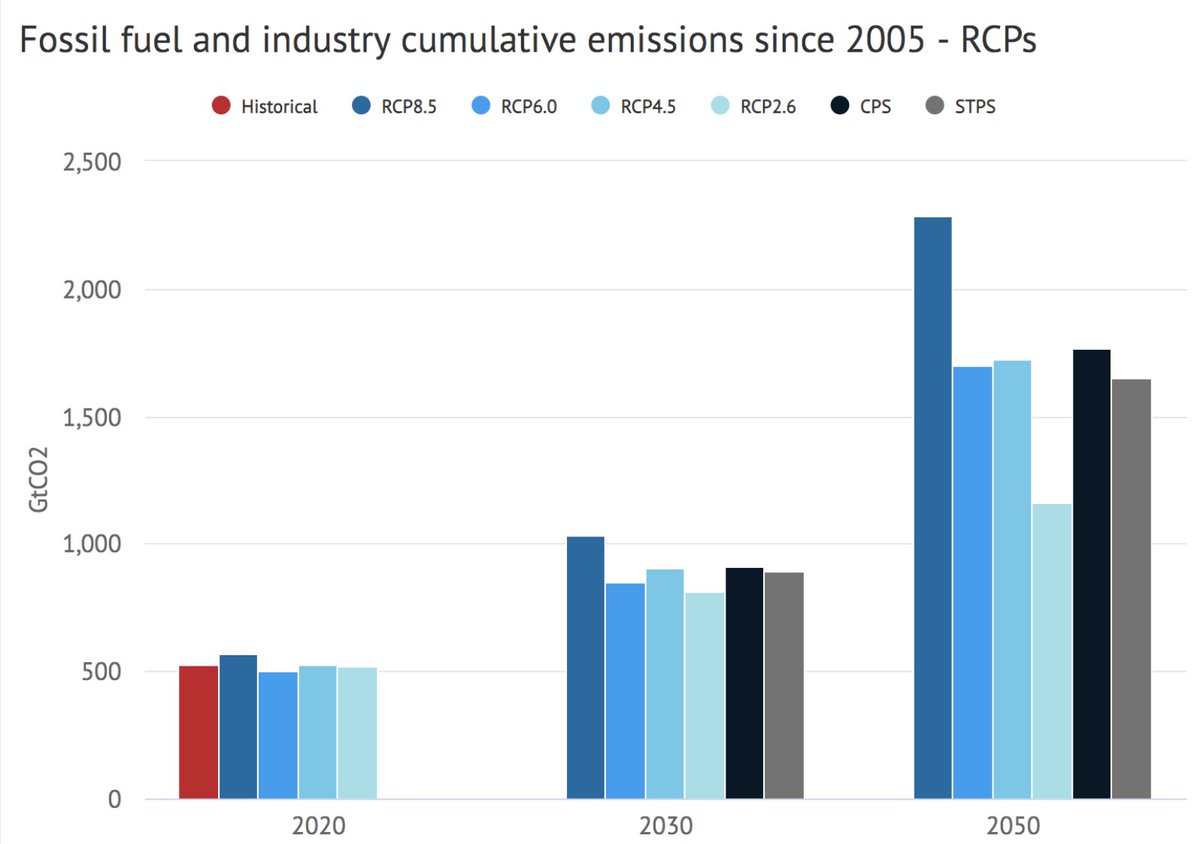
We've done a major update of our @CarbonBrief CMIP6 explainer to include the latest ScenarioMIP results; up to 36 different CMIP6 models included now, with between 28 and 35 models available in each of the "Tier 1" scenarios (2.6, 4.5, 7.0, and 8.5): carbonbrief.org/cmip6-the-next… 1/8
Here are the latest warming projections (late 21st century vs preindustrial) from CMIP6 models. Note that SSP1-1.9 is included as it has 12 models available, but others (3.4, 6.0) are not shown as they still have very few (< 10) models reporting. 2/8 

Some notable changes: the SSP1-1.9 scenario which was designed to limit warming to 1.5C actually succeeds in doing that in the multimodel mean (which was not the case when we had fewer model runs in our initial analysis). Similarly, SSP1-2.6 MMM (barely) limits warming to 2C. 3/8
Its illustrative to compare the CMIP6 model results to similar scenarios run in CMIP5. Note that SSP4-6.0 results are not shown here due to the very small number of models reporting so far: 4/8 

Generally speaking, there is a lot of overlap in the model ranges, but the CMIP6 multimodel mean is around 0.3C to 0.4C warmer by 2100, reflecting the higher sensitivity of some of the new models. 5/8
Turning to historical runs, here is the updated hindcast plot, showing quite similar overall performance to CMIP5. 6/8 

That said, the CMIP6 multimodel mean does project a bit faster warming over the last 30 years on average than CMIP5, and around 16% faster than whats been observed: 7/8 

Finally, here are the equilibrium climate sensitivities of the CMIP6 models; those in yellow are higher than the IPCC AR5 "likely" range of 1.5C to 4.5C per doubling CO2: 8/8 

• • •
Missing some Tweet in this thread? You can try to
force a refresh





